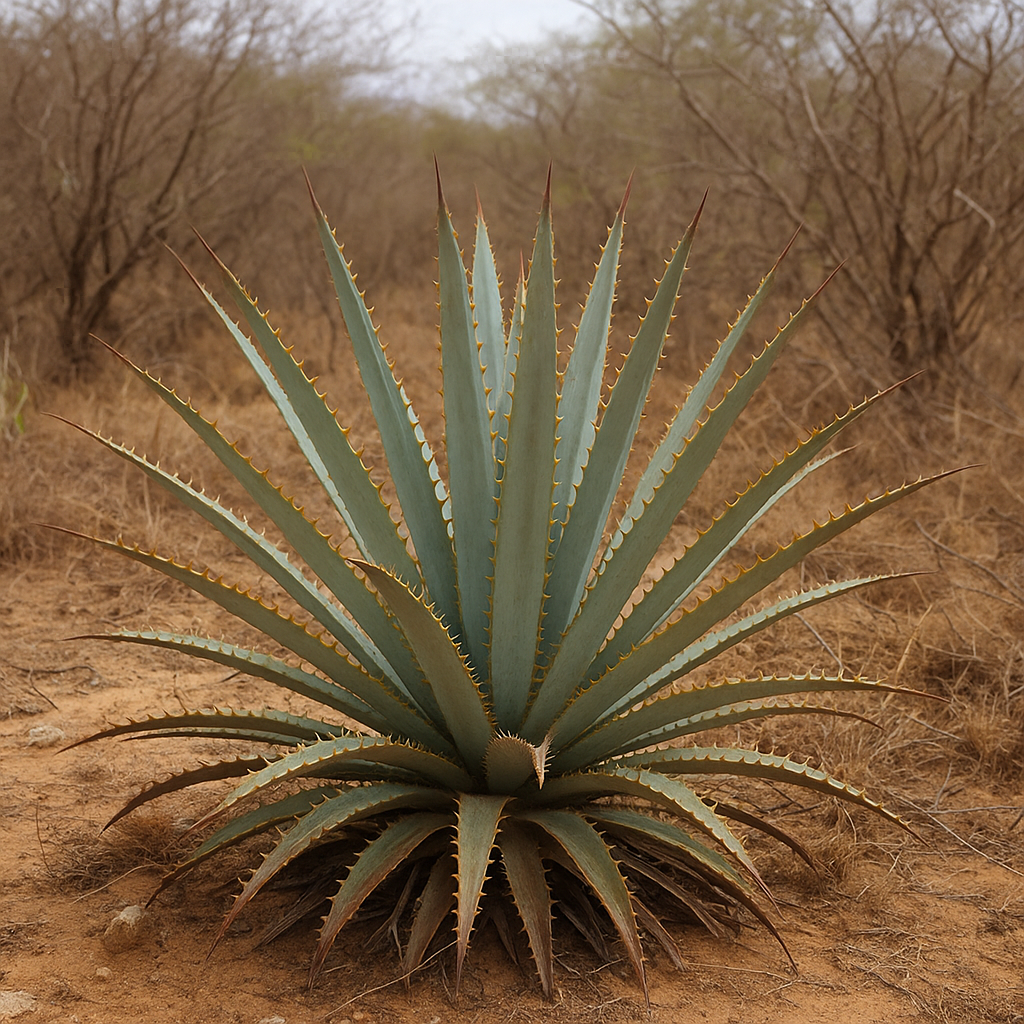The macambira cactus is a typical plant of Brazil’s semi-arid regions, especially the Caatinga biome. Tough, adaptable, and full of unique traits, it has drawn attention not only from researchers and environmentalists but also from landscapers and exotic plant enthusiasts. In this article, we’ll explore its main characteristics, habitat, uses, and growing tips.
What Is the Macambira Cactus?
The macambira cactus is a xerophytic plant, meaning it’s adapted to dry environments. Despite its name, it’s not a true cactus. It actually belongs to the Bromeliaceae family, specifically the Bromelia genus. Its popular names vary by region and may include cacto-macambira, macambira de cacto, or simply macambira.
With its rugged, imposing look—featuring long, tough, and spiny leaves—it resembles both cacti and other plants native to the Caatinga. Its thick foliage stores water, allowing it to survive long drought periods with ease.
Botanical Characteristics
The plant forms a rosette of spiky leaves that can exceed 1 meter (3.3 feet) in diameter. The leaves are bluish-green, rigid, and serrated along the edges. In the center, it produces a colorful inflorescence that attracts bees, hummingbirds, and other pollinators.
Over time, macambira plants can form dense clumps, providing shelter and protection for many small animals.
Scientific name:
- Bromelia laciniosa
Family:
- Bromeliaceae
Geographic Distribution and Habitat
Macambira is native to northeastern Brazil, especially in states like Ceará, Bahia, Pernambuco, and Paraíba. It thrives in rocky, nutrient-poor soils where few other species can survive. That’s why it’s considered a key species of the Caatinga biome.
Its extreme drought resistance makes it vital for soil conservation and erosion control in degraded or desertified landscapes.
Traditional and Economic Uses
Historically, macambira has been used as emergency fodder for livestock during long droughts. The spiny leaves are cut, dried in the sun to soften the thorns, and then fed to animals. While it has low nutritional value, it serves as a crucial alternative when other food sources are unavailable.
Some communities also use it in folk medicine, for treating digestive issues and muscle pain, although these uses lack scientific backing.
Recently, it’s been gaining popularity in xeriscaping projects, used in sustainable gardens due to its exotic appearance and minimal water needs.
How to Grow the Macambira Cactus
While growing macambira outside its natural habitat takes a bit of care, it’s entirely feasible—even in large pots or dry gardens.
Growing tips:
- Sunlight: Full sun. The plant needs several hours of direct light each day.
- Soil: Well-draining, sandy or rocky, mimicking the dry Caatinga environment.
- Watering: Minimal. Only water when the soil is completely dry. Overwatering can cause root rot.
- Fertilizing: Low maintenance. A single annual application of organic compost is enough.
- Pruning: Not required, except for removing dead or damaged leaves.
Its sharp, thorny leaves can cause injury, so gloves are highly recommended when handling.
Ecological Importance
Macambira plays a vital role in maintaining biodiversity within the Caatinga biome. It provides food and shelter for insects, birds, and small mammals. It also helps retain soil moisture and contributes to local microclimate stability.
Moreover, due to its natural resilience, macambira is a top candidate for reforestation and land restoration projects in arid and semi-arid zones.
Fun Facts
- Some macambira species produce sweet edible fruits used in juices and traditional sweets.
- In extreme droughts, its fiber can be used to craft ropes and handmade mats.
- Its spiny structure makes it ideal as a natural living fence, preventing animals from entering certain areas.
Conclusion
The macambira cactus is a true symbol of resilience in Brazil’s drylands. With its rugged beauty, multifunctional uses, and ecological relevance, this plant deserves greater recognition—not only in conservation projects but also in sustainable garden designs.
If you’re looking for a tough, attractive, and low-maintenance plant, the macambira cactus is an outstanding choice!

🪴 Shop Stunning Succulents at Leaf & Clay
Browse a curated collection of beautiful, healthy succulents delivered right to your door. Perfect for collectors and plant lovers!
Discover the medicinal benefits, historical uses, and surprising versatility of this common yet powerful plant.

